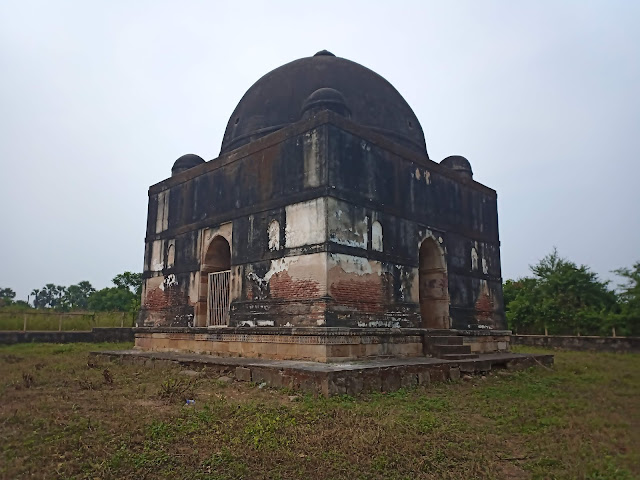An Archaeologist's Guide to Gujarat, India: Champaner
The
Champaner-Pavagadh Archaeological Park is located in the historical
city of Champaner in Gujarat, about a one hour drive northeast from
Vadodara. The UNESCO World Heritage listed archaeological
park sprawls throughout the city, with dwellings of the local people
dotted throughout the medieval architectural remains.
 | ||
| Google Maps |
The origins of the city lay in the 8th century when it was ruled by King Vanraj Chavda of the Chavda dynasty. The area was under Rajput landowners' control for 200 years from the early 14th century, and served as the capital of Gujarat at the time. They ruled from the Pavagadh fort above the town.
The
Rajputs were later defeated by Sultan Mahmud Begada, who renamed the
city Muhammadabad and undertook extensive building works. Following
takeover by Humayun of the Mughal dynasty, the capital of Gujarat was
moved to Ahmedabad and the city lost its political importance in the
region.
There
are many structures marked through the hilly landscape of the town, and
it can be difficult to see them all as some are not easily accessible
and are located a distance apart. Some of the structures include the
Jami Masjid and other mosques, as well as tombs and a stepped well that I unfortunately missed during my visit. Hindu and Jain religious structures are also found around the city.

While wandering around one of the mosques, I was surprised by an animal that abruptly leaped in front of my path and then jumped up and over the fence surrounding the site. My first, completely illogical, thought was that it was a kangaroo but as I looked properly I realised it was a large monkey. It turned out that the roof of the mosque and the top of the medieval fort walls had numerous monkeys sitting, running around and looking down on visitors to the site.


Entry
to the Champaner-Pavagadhar Archaeological Park costs foreigners 500
rupees (about 10 AUD or 7 USD), and the park is open daily from 8:30am
to 5pm. This entry ticket includes access to all parts of the
archaeological site throughout the city. Due to the distance between
various areas of the site, you will need to show your entry ticket to
guards at different gates while exploring the park.
As a result of the sprawling nature of the sites, both myself and my driver were confused about the directions of the different monuments. The lack of signage and my phone dropping in and out of reception didn't help. As a result, I didn't end up seeing everything there was to see here, which I realised when chatting with the Head of Archaeology at MS University Baroda later that day.
Despite this, the Jami Masjid in particular is architecturally stunning and you can see some nice views from the elevated monuments. All in all, the park is a good option for a half-day trip from Vadodara.
Tweet
As a result of the sprawling nature of the sites, both myself and my driver were confused about the directions of the different monuments. The lack of signage and my phone dropping in and out of reception didn't help. As a result, I didn't end up seeing everything there was to see here, which I realised when chatting with the Head of Archaeology at MS University Baroda later that day.
In Summary
For any visitors to the Champaner-Pavagadh Archaeological Park I would recommend doing a little bit of research on the locations of the individual monuments within the park before arriving as the language barrier can be an issue when asking directions from the local people. The alternative is making sure that your driver knows the site well, which mine definitely didn't.Despite this, the Jami Masjid in particular is architecturally stunning and you can see some nice views from the elevated monuments. All in all, the park is a good option for a half-day trip from Vadodara.



Comments
Post a Comment